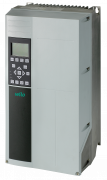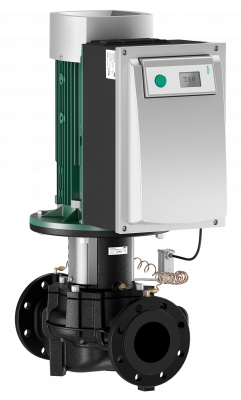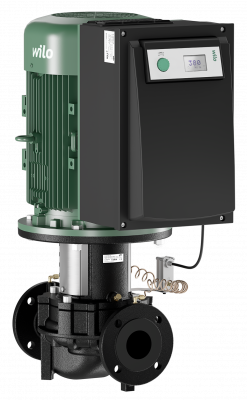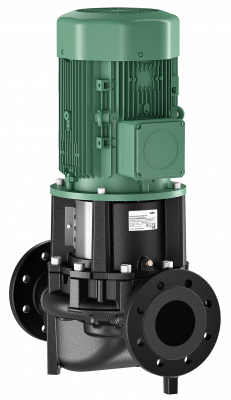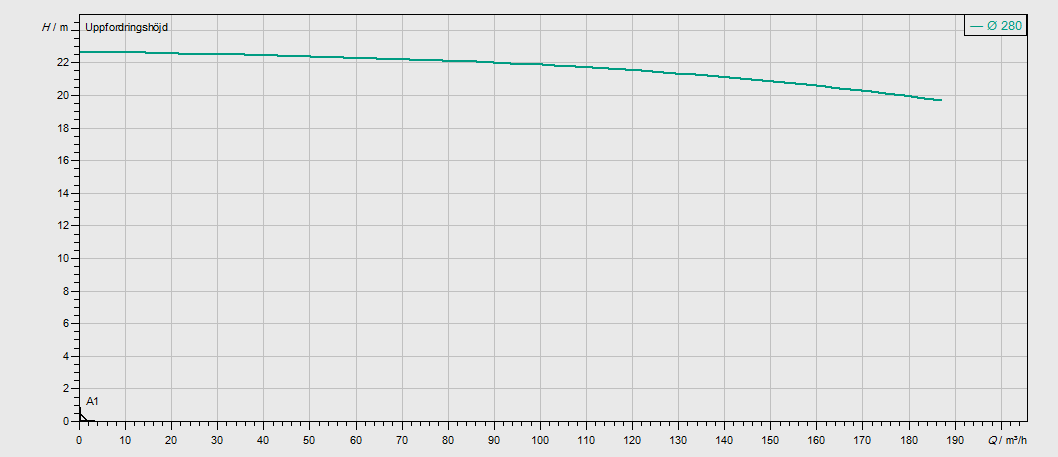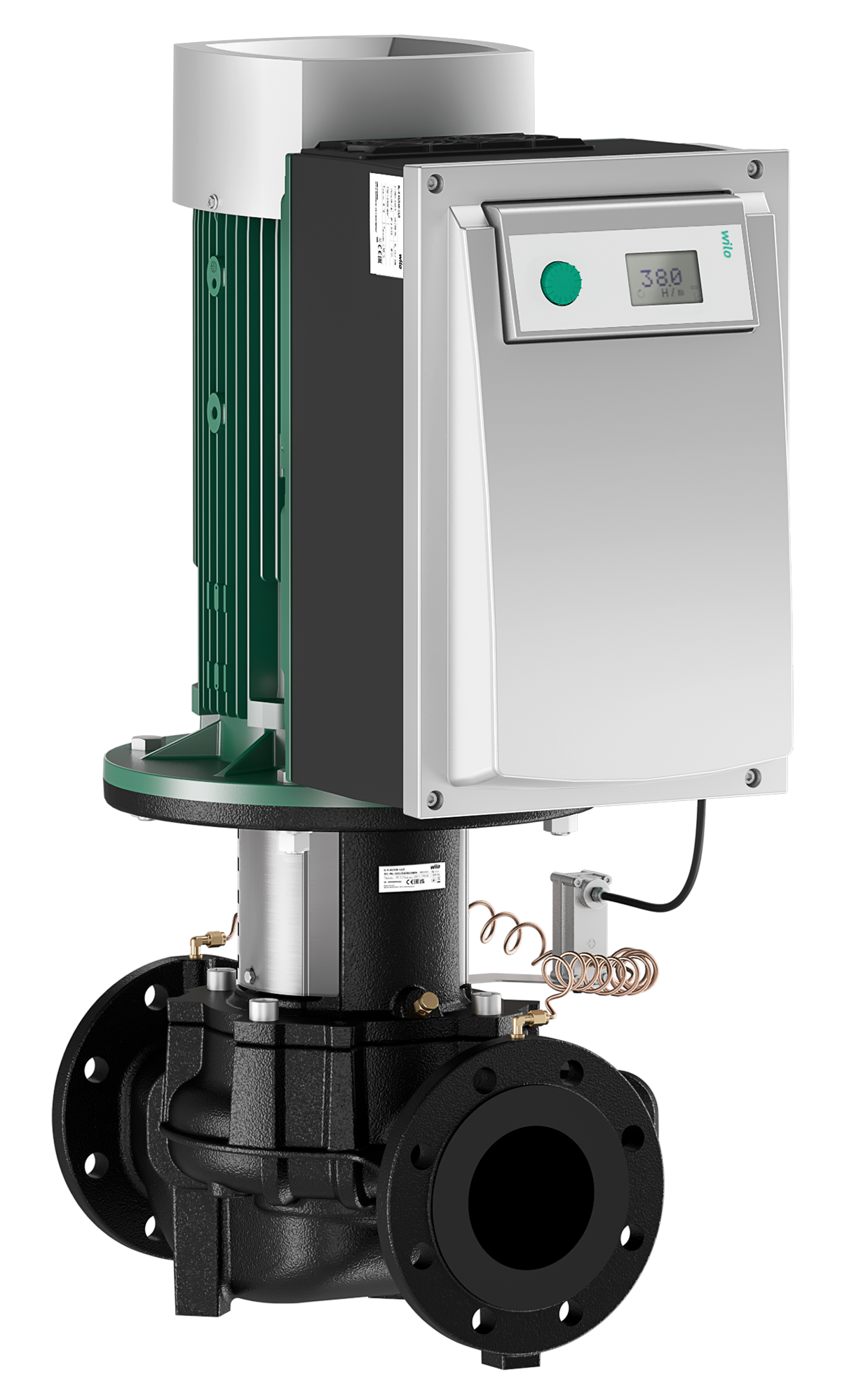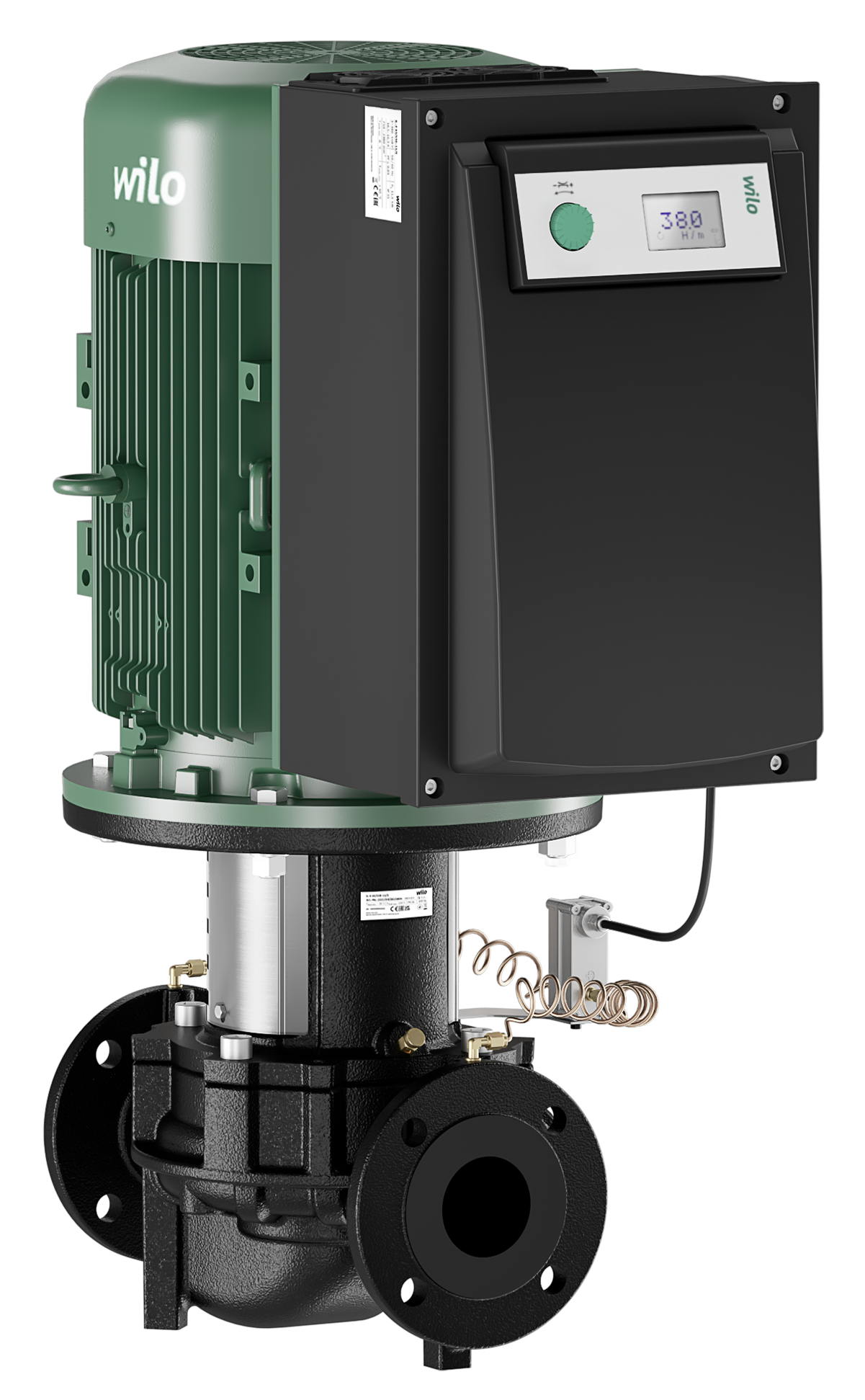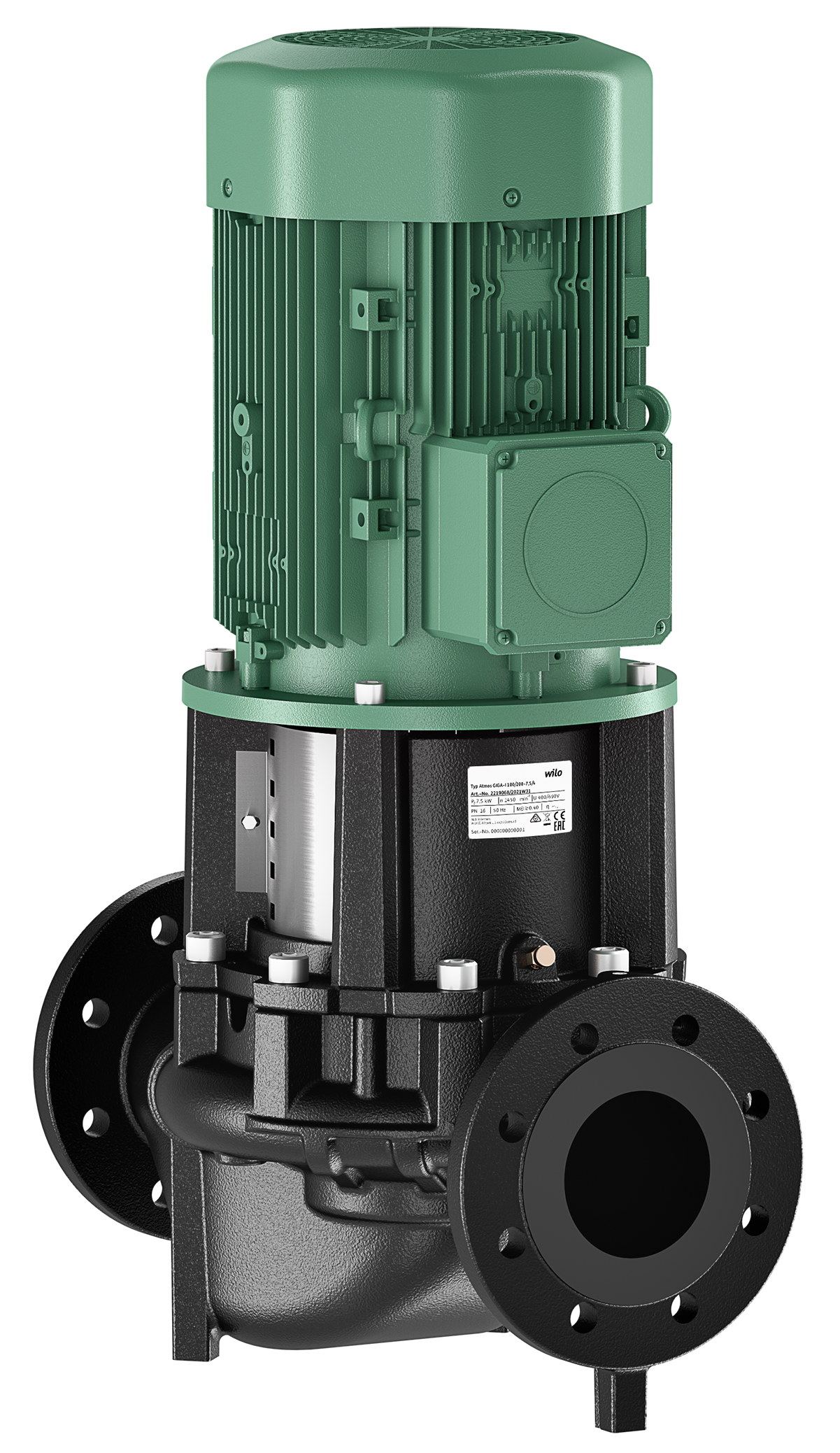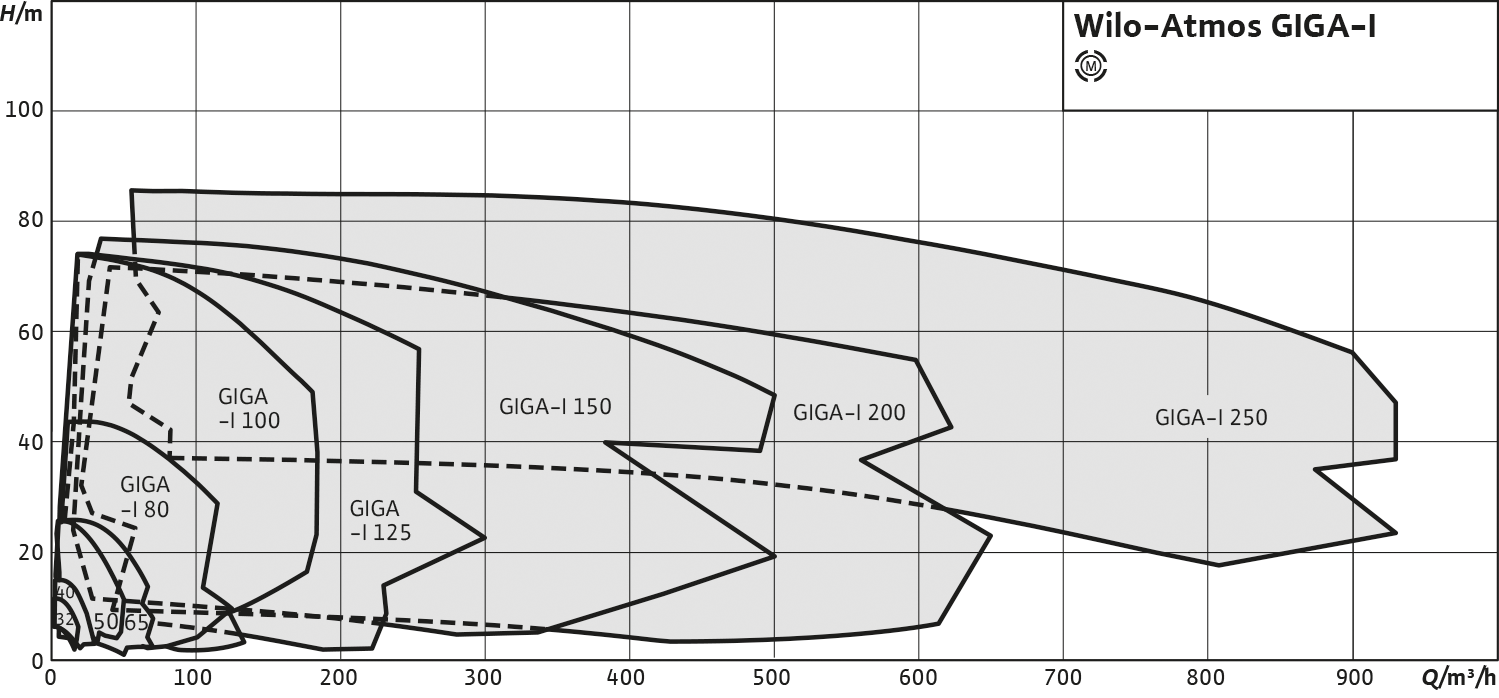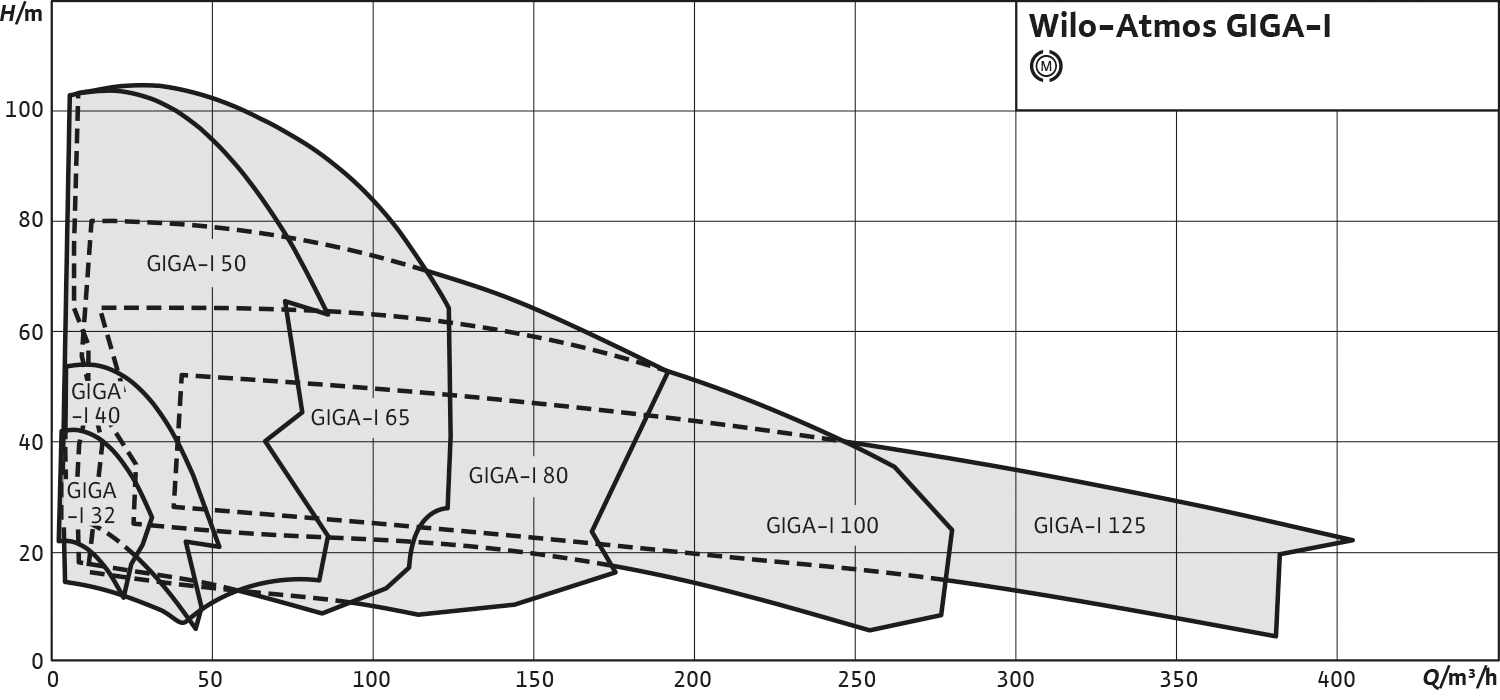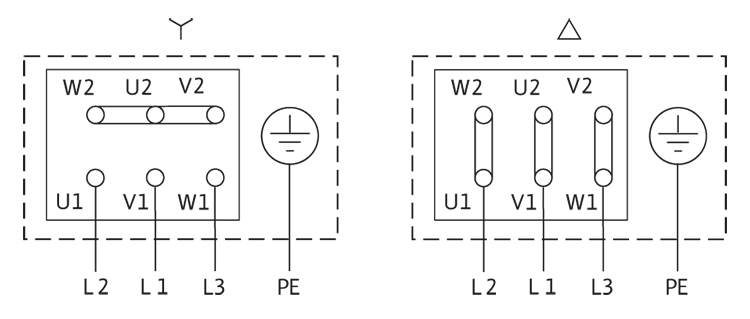Existing pump - Circulation Pump curve
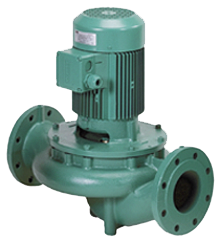
Replacement pump - High Efficiency Premium Exchange sheet
Comment
Product information
Stratos GIGA 125/2-28/15
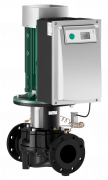
Your advantages
- Innovative high-efficiency pump for maximum overall efficiency levels
- High-efficiency EC motor with efficiency class IE5 according to IEC 60034-30-2
- Highest possible operational reliability thanks to standby pump
- Optional interfaces for connection to building automation using insertable IF modules
The Wilo-Stratos GIGA is the ideal high-efficiency pump for use in heating, air conditioning and cooling applications in buildings where large volumes of water have to be pumped to great delivery heights. Wilo-Stratos GIGA offers ever greater operational reliability with the standby pump in the twin-head pump version.
Construction
High-efficiency in-line twin-head pump with EC motor and electronic power adjustment in glanded pump construction. Version as single-stage low-pressure centrifugal pump with flange connection and mechanical seal.
Application
The pumping of heating water (in accordance with VDI 2035), cold water and water-glycol mixtures without abrasive substances in heating, cold water and cooling systems.
Equipment/function
Operating modes
- Δp-c for constant differential pressure
- Δp-v for variable differential pressure
- PID-Control
- Constant speed (n=constant)
- Green button and display
- Differential pressure setpoint setting
- Setting the speed (manual control mode)
- Setting the operating mode
- Setting the pump ON/OFF
- Configuration of all operating parameters
- Fault acknowledgement
- "Overriding Off" control input
- “External pump cycling” control input (only effective in twin-head pump operation)
- Analogue input 0 – 10 V, 0 – 20 mA for constant speed (DDC) and remote setpoint adjustment
- Analogue input 2 – 10 V, 4 – 20 mA for constant speed (DDC) and remote setpoint adjustment
- Analogue input 0 – 10 V for actual value signal from pressure sensor
- Analogue input 2 – 10 V, 0 – 20 mA, 4 – 20 mA for actual value signal from pressure sensor
- Collective fault signal SSM
- Collective run signal SBM
- Infrared interface for wireless data exchange with IR-Monitor/IR-Stick
- Plug-in position for Wilo IF-Modules (Modbus, BACnet, CAN, PLR, LON) for connection to building automation
- Full motor protection with integrated trip electronics
- Access disable
- Main/standby operation (automatic fault-actuated switchover)
- Pump cycling main/standby operation after 24 hours
- Parallel operation
- Parallel operation (efficiency-optimised peak-load activation and deactivation)
- Pump
- Installation and operating instructions
- Technical data
- Permitted temperature range of the fluid: -20 °C to +140 °C
- Mains connection 3~480 V ±10 %, 50/60 Hz, 3~440 V ±10 %, 50/60 Hz, 3~400 V ±10 %, 50/60 Hz, 3~380 V -5 % +10 %, 50/60 Hz
- Protection class IP55
- Nominal diameter DN 40 to DN 100
- Max. operating pressure 16 bar
- Pump housing and lantern: EN-GJL-250
- Impeller: PPS-GF40 or EN-GJL-200 depending on the type
- Shaft: 1.4122
- Mechanical seal: AQEGG; other mechanical seals on request
Replacement pump - Electronic Exchange sheet
Comment
Product information
IL-E 125/250-15/4
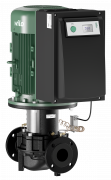
Your advantages
- Energy savings due to integrated electronic power adjustment
- Optional interfaces for bus communication using plug-in IF-Modules
- Simple operation with Green Button Technology and display
- Integrated dual pump management
- Integrated full motor protection (PTC thermistor sensor) with trip electronics
Electronically controlled glanded single pump in in-line design with flange connection and automatic power adjustment.
Application
Pumping of heating water (acc. to VDI 2035), cold water and water/glycol mixtures without abrasive substances in heating, cold water and cooling systems.
Equipment/function
Operating modes:
- Δp-c for constant differential pressure
- Δp-v for variable differential pressure
- PID control
- Constant speed (n=constant)
- Green button and display
- Differential pressure setpoint setting
- Setting the speed (manual control mode)
- Setting the operating mode
- Setting the pump ON/OFF
- Configuration of all operating parameters
- Fault acknowledgement
- "Overriding Off" control input
- “External pump cycling” control input (effective only in dual pump operation)
- Analogue input 0 – 10 V, 0 – 20 mA for constant speed (DDC) and remote setpoint adjustment
- Analogue input 2 – 10 V, 4 – 20 mA for constant speed (DDC) and remote setpoint adjustment
- Analogue input 0 – 10 V for actual value signal from pressure sensor
- Analogue input 2 – 10 V, 0 – 20 mA, 4 – 20 mA for actual value signal from pressure sensor
- Collective fault signal SSM
- Collective run signal SBM
- Infrared interface for wireless data exchange with IR-Monitor/IR-Stick
- Plug-in position for Wilo IF-Modules (Modbus, BACnet, CAN, PLR, LON) for connection to building automation
- Full motor protection with integrated trip electronics
- Access disable
- Main/standby operation (automatic fault-actuated switchover)
- Pump cycling main/standby operation after 24 hours
- Parallel operation
- Parallel operation (efficiency-optimised peak-load activation and deactivation)
- Pump
- Installation and operating instructions
- Permissible temperature range of -20 °C to +140 °C
- Mains connection
- 3~440 V ±10 %, 50/60 Hz
- 3~400 V ±10 %, 50/60 Hz
- 3~380 V -5 % +10 %, 50/60 Hz
- Protection class IP 55
- Nominal diameter DN 40 to DN 200
- Max. operating pressure 16 bar up to +120 °C, 13 bar up to +140 °C
- Pump housing and lantern: EN-GJL-250
- Impeller
- Standard version: EN-GJL-200
- Special version: Bronze CuSn 10
- Shaft: 1.4122
- Mechanical seal: AQEGG; other mechanical seals on request
Single-stage, low-pressure centrifugal pump in in-line design with:
- Mechanical seal
- Flange connection
- Lantern
- Coupling
- Drive with integrated electronic speed control
Replacement pump - Conventional Exchange sheet
Comment
Product information
Atmos GIGA-I 125/250-15/4

Design
Glanded pump in in-line design with flange connection.
Application
The pumping of heating water (in accordance with VDI 2035), chilled water and water-glycol mixtures without abrasive substances in heating, chilled water and cooling systems.
Technical data
- Permitted temperature range of the fluid: -20 °C to +140 °C
- Max. ambient temperature 40 °C
- Mains connection 3~400 V, 50 Hz (others on request)
- Protection class IP55
- Nominal diameter DN 32 to DN 250
- Standard version for operating pressure: 13 bar (up to +140 °C) / 16 bar (up to +120 °C)
- Pump housing and lantern: Standard: EN-GJL-250;
- Impeller: Standard: EN-GJL-200; special version: Bronze CuSn 10 stainless steel 1.4408
- Shaft: 1.4122
- Mechanical seal: AQEGG; other mechanical seals on request
Single-stage, low-pressure centrifugal pump in in-line design with:
- Mechanical seal
- Flange connection with pressure measuring connection R 1/8
- Lantern
- Coupling
- IEC standard motor
- Pump
- Installation and operating instructions
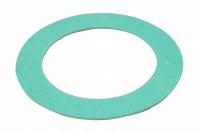
- Thickness: 2 mm.
- Inner diameter: 142 mm.
- Outer diameter: 195 mm.

The sensor measures the differential pressure between the suction ports and discharge ports to the pipes, and converts this into an electrical signal 4-20 mA, which is used by the frequency converter to regulate the pressure of the pump. The value of the output current is proportional to the differential pressure.

The sensor measures the differential pressure between the suction ports and discharge ports to the pipes, and converts this into an electrical signal 4-20 mA, which is used by the frequency converter to regulate the pressure of the pump. The value of the output current is proportional to the differential pressure.

The sensor measures the differential pressure between the suction ports and discharge ports to the pipes, and converts this into an electrical signal 4-20 mA, which is used by the frequency converter to regulate the pressure of the pump. The value of the output current is proportional to the differential pressure.
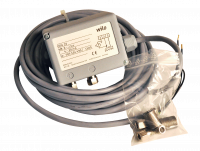
The sensor measures the differential pressure between the suction ports and discharge ports to the pipes, and converts this into an electrical signal 4-20 mA, which is used by the frequency converter to regulate the pressure of the pump. The value of the output current is proportional to the differential pressure.

The sensor measures the differential pressure between the suction ports and discharge ports to the pipes, and converts this into an electrical signal 4-20 mA, which is used by the frequency converter to regulate the pressure of the pump. The value of the output current is proportional to the differential pressure.
